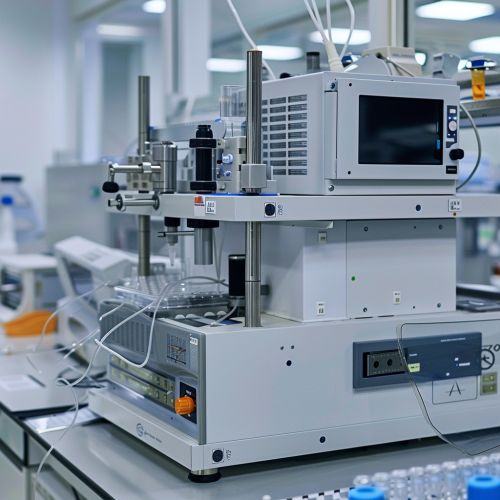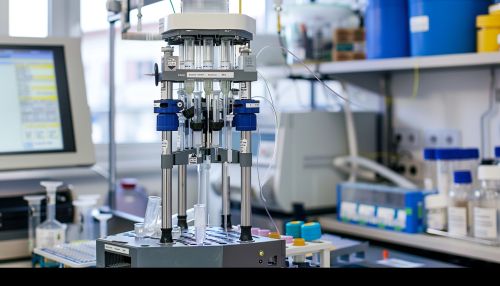Sodium Dodecyl Sulfate-Polyacrylamide Gel Electrophoresis
Introduction
Sodium Dodecyl Sulfate-Polyacrylamide Gel Electrophoresis (SDS-PAGE) is a laboratory method used in biochemistry, genetics, and molecular biology to separate proteins according to their electrophoretic mobility. This technique is a type of polyacrylamide gel electrophoresis, a broader category of gel-based separation methods. The SDS-PAGE method is widely used in protein purification and analysis, as well as in the study of genetic disorders and diseases.


Principle
The principle of SDS-PAGE is based on the ability of sodium dodecyl sulfate (SDS), an anionic detergent, to denature proteins by binding to their polypeptide chains. The SDS imparts a negative charge to the proteins, which allows them to migrate towards the anode (positive electrode) when an electric current is applied. The polyacrylamide gel acts as a molecular sieve, separating the proteins based on their size, with smaller proteins moving faster through the gel matrix than larger ones.
Procedure
The procedure of SDS-PAGE involves several steps, including sample preparation, gel preparation, electrophoresis, and finally, staining and destaining the gel to visualize the separated proteins.
Sample Preparation
In the sample preparation stage, the protein samples are mixed with a buffer containing SDS and a reducing agent, such as beta-mercaptoethanol or dithiothreitol (DTT). The mixture is then heated to denature the proteins and break down their tertiary and quaternary structures.
Gel Preparation
The gel used in SDS-PAGE is typically composed of two parts: a resolving gel and a stacking gel. The resolving gel, which has a lower pH and a higher concentration of acrylamide, is responsible for the actual separation of proteins. The stacking gel, on the other hand, has a higher pH and a lower acrylamide concentration, and serves to concentrate the proteins into a narrow band before they enter the resolving gel.
Electrophoresis
During electrophoresis, the gel is submerged in a buffer solution and an electric current is applied. The negatively charged proteins migrate towards the anode at a rate inversely proportional to the logarithm of their molecular weights.
Staining and Destaining
After electrophoresis, the gel is stained with a dye, such as Coomassie Brilliant Blue, to visualize the separated proteins. The gel is then destained to remove excess dye, leaving behind colored bands that correspond to the proteins.
Applications
SDS-PAGE has a wide range of applications in biological research and medical diagnostics. It is commonly used in protein purification, to assess the purity and estimate the molecular weight of proteins. It is also used in the study of protein structure and function, as well as in the diagnosis of genetic disorders and diseases, such as muscular dystrophy and Alzheimer's disease.
Limitations
Despite its widespread use, SDS-PAGE has several limitations. For instance, it provides only an estimate of a protein's molecular weight, and cannot determine its exact mass. It also cannot differentiate between proteins of similar sizes, or proteins that have undergone post-translational modifications. Furthermore, SDS-PAGE requires the use of potentially hazardous chemicals, such as acrylamide and SDS, which pose health and environmental risks.
